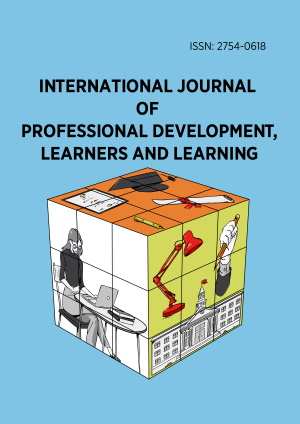Research Article
Educational Preparedness of the Home Environment: A Technological Perspective Amidst Coronavirus (COVID-19) Outbreak
More Detail
1 Universidad de Valladolid, SPAIN2 University of Zambia, ZAMBIA* Corresponding Author
International Journal of Pedagogical Development and Lifelong Learning, 2(1), January 2021, ep2101, https://doi.org/10.30935/ijpdll/9290
Submitted: 17 August 2020, Published: 29 November 2020
OPEN ACCESS 3724 Views 2058 Downloads
ABSTRACT
Schools in Zambia partner with students’ families and communities through the Parents Teachers Association to promote community participation in the academic and social welfare of students. However, this partnership is sometimes weakened by unexpected external factors to the detriment of the students’ educational development. This study used the theoretical lens of Epstein’s School-Family-Community partnership model to examine the role of parents in the home environment in creating a supportive technological environment for school children in response to the effects of COVID-19 on education. To accomplish the purpose of the study, twenty parents responded to open-ended written interviews. Data were qualitatively analyzed using content analysis. Results revealed inadequate preparation of parents to respond to the academic needs of their school children. Households were facing numerous challenges in procuring curriculum materials like prescribed textbooks. Further, it was revealed that electricity load shading negatively affected students’ access to the educational content on television and e-learning facilities aimed at supplementing school classroom instruction. The study concluded that there were limited or no technology resources in Zambian homes to support students’ access to education during the COVID-19 period.
CITATION (APA)
Sintema, E. J., & Singogo, D. (2021). Educational Preparedness of the Home Environment: A Technological Perspective Amidst Coronavirus (COVID-19) Outbreak. International Journal of Pedagogical Development and Lifelong Learning, 2(1), ep2101. https://doi.org/10.30935/ijpdll/9290
REFERENCES
- Basilaia, G., & Kvavadze, D. (2020). Transition to Online Education in Schools during a SARS-CoV-2 Coronavirus (COVID-19) Pandemic in Georgia. Pedagogical Research, 5(4), em0060. https://doi.org/10.29333/pr/7937
- Basilaia, G., Dgebuadze, M., Kantaria, M., & Chokhonelidze, G. (2020). Replacing the Classic Learning Form at Universities as an Immediate Response to the COVID-19 Virus Infection in Georgia. International Journal for Research in Applied Science & Engineering Technology (IJRASET), 8, 101-108. https://doi.org/10.22214/ijraset.2020.3021
- Cakir, Z., & Savas, H. B. (2020). A Mathematical Modelling Approach in the Spread of the Novel 2019 Coronavirus SARS-CoV-2 (COVID-19) Pandemic. Electronic Journal of General Medicine, 17(4), em205. https://doi.org/10.29333/ejgm/7861
- Chansa-Kabali, T., & Westerholm, J. (2014). The role of family on pathways to acquiring early reading skills in Lusaka’s low-income communities. Human Technology: An Interdisciplinary Journal on Humans in ICT Environments, 10(1), 5-21. https://doi.org/10.17011/ht/urn.201405281857
- Dor, A. (2012). Parents’ Involvement in School: Attitudes of Teachers and School Counselors. Online Submission, US-China Education Review B, 11, 921-935.
- Epstein, J. L. (1995). School/family/community partnerships. Phi delta kappan, 76(9), 701.
- Germann, T. C., Gao, H., Gambhir, M., Plummer, A., Biggerstaff, M., Reed, C., & Uzicanin, A. (2019). School dismissal as a pandemic influenza response: When, where and for how long?. Epidemics, 28, 100348. https://doi.org/10.1016/j.epidem.2019.100348
- Gottfried, A. E., Fleming, J. S., & Gottfried, A. W. (1998). Role of cognitively stimulating home environment in children’s academic intrinsic motivation: A longitudinal study. Child development, 69(5), 1448-1460.
- Mulenga, E. M., & Marbán, J. M. (2020). Is COVID-19 the Gateway for Digital Learning in Mathematics Education?. Contemporary Educational Technology, 12(2), ep269. https://doi.org/10.30935/cedtech/7949
- Napoli, A. R., & Purpura, D. J. (2018). The home literacy and numeracy environment in preschool: Cross-domain relations of parent–child practices and child outcomes. Journal of Experimental Child Psychology, 166, 581-603. https://doi.org/10.1016/j.jecp.2017.10.002
- Qi, W. (2017). Evaluating a Virtual Collaborative Environment for Interactive Distance Teaching and Learning: A Case Study. In Advances in Intelligent Information Hiding and Multimedia Signal Processing (pp. 11-18). Springer, Cham. https://doi.org/10.1007/978-3-319-50212-0_2
- Sabar Ben-Yehosua, N. (1995). The qualitative research. Tel-Aviv: Modan. (in Hebrew)
- Sintema, E. J. (2020). Effect of COVID-19 on the Performance of Grade 12 Students: Implications for STEM Education. Eurasia Journal of Mathematics, Science and Technology Education, 16(7), em1851. https://doi.org/10.29333/ejmste/7893
- Toquero, C. M. (2020). Challenges and Opportunities for Higher Education amid the COVID-19 Pandemic: The Philippine Context. Pedagogical Research, 5(4), em0063. https://doi.org/10.29333/pr/7947
- Zippert, E. L., & Rittle-Johnson, B. (2020). The home math environment: More than numeracy. Early Childhood Research Quarterly, 50, 4-15. https://doi.org/10.1016/j.ecresq.2018.07.009

 The articles published in this journal are licensed under the CC-BY Creative Commons Attribution International License.
The articles published in this journal are licensed under the CC-BY Creative Commons Attribution International License.